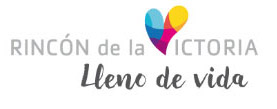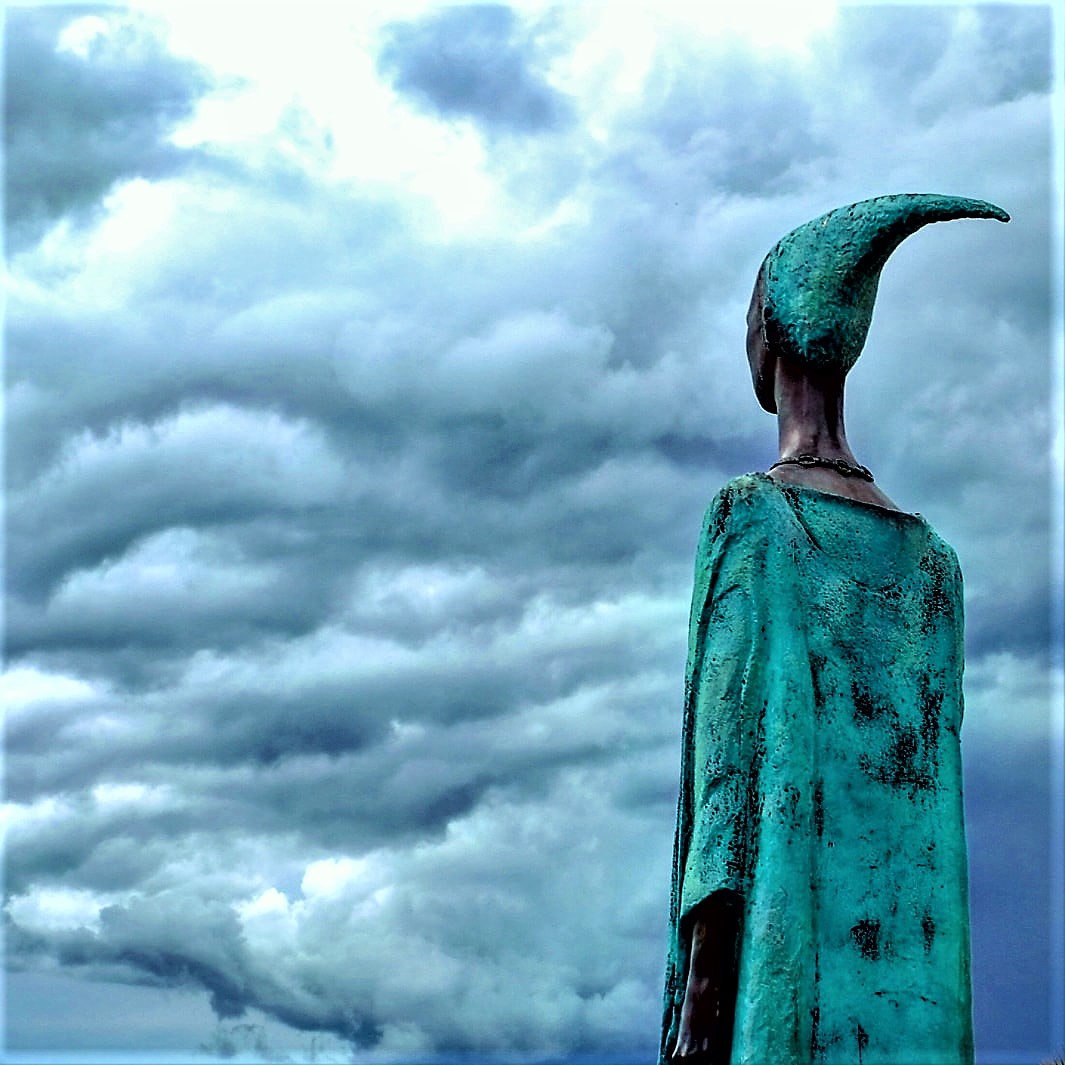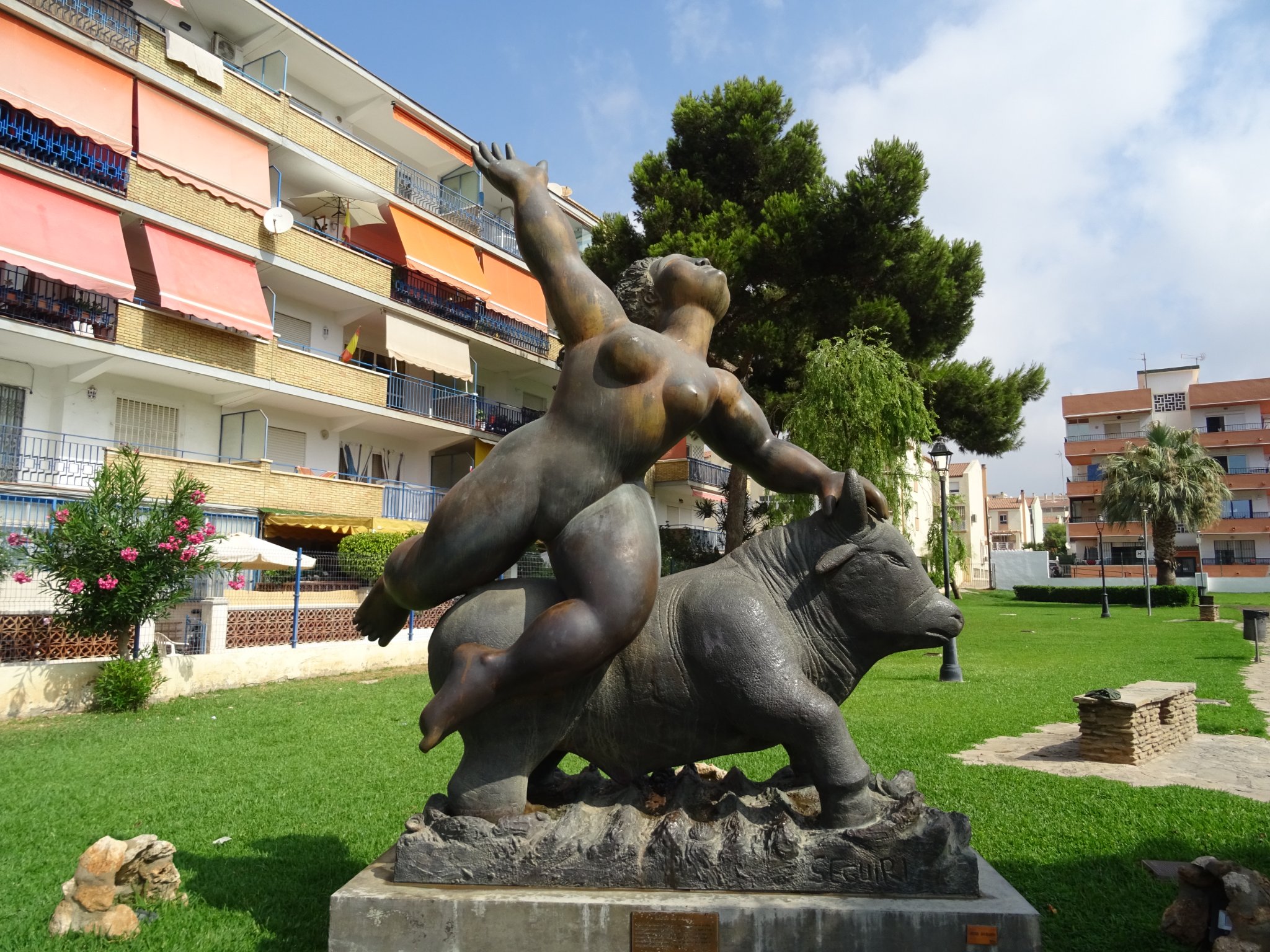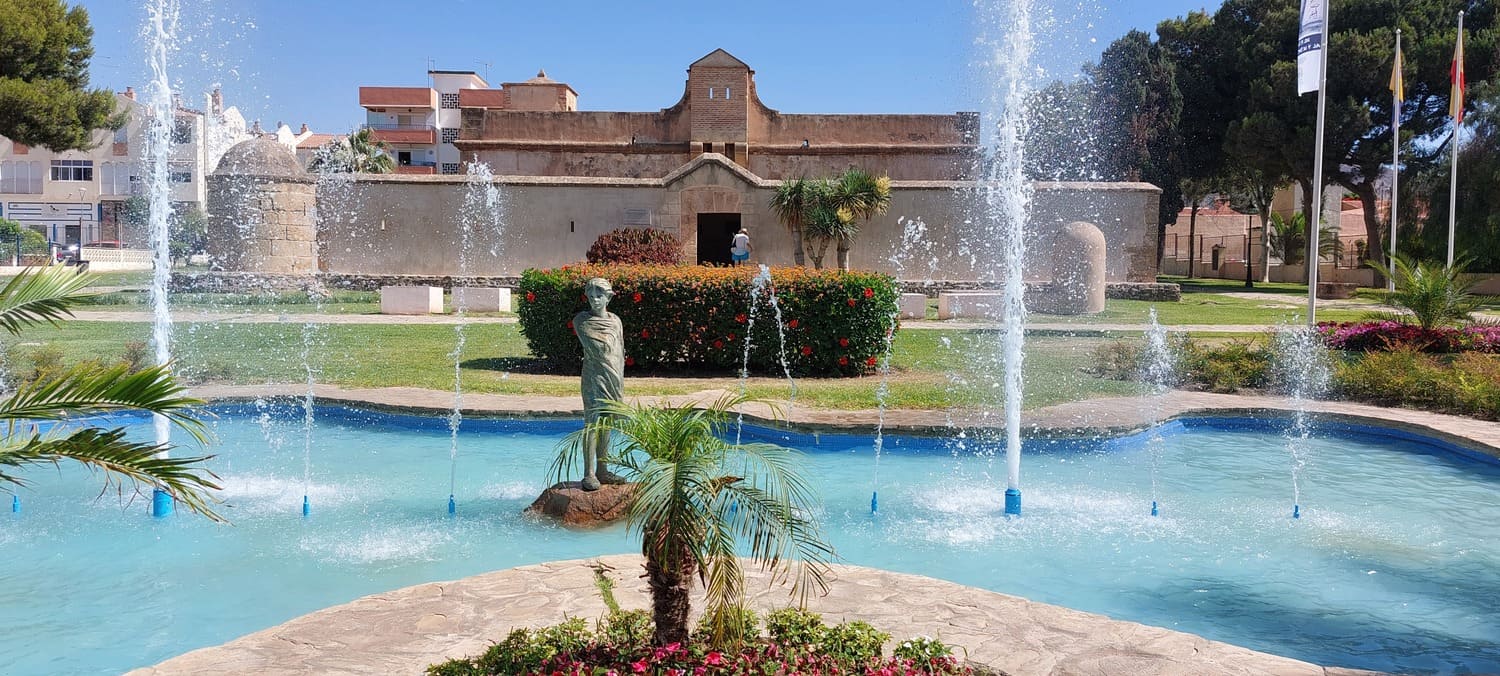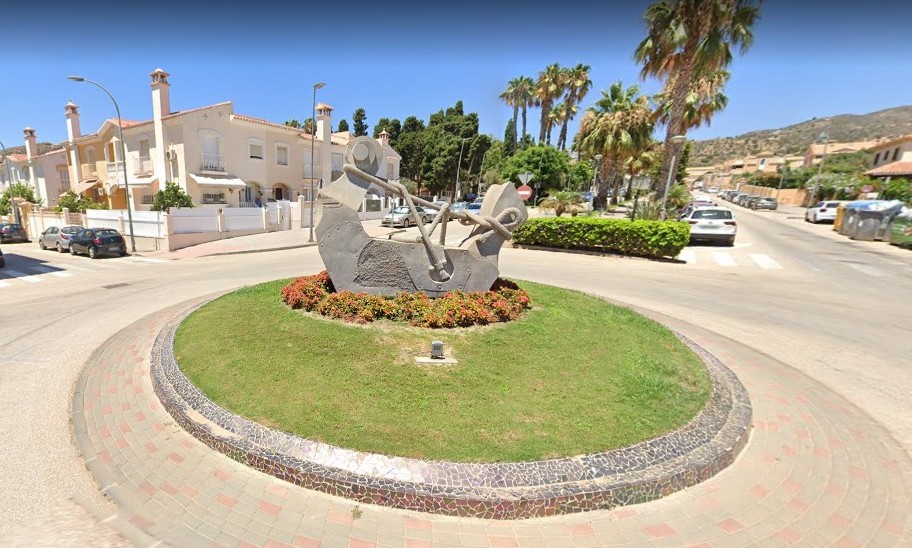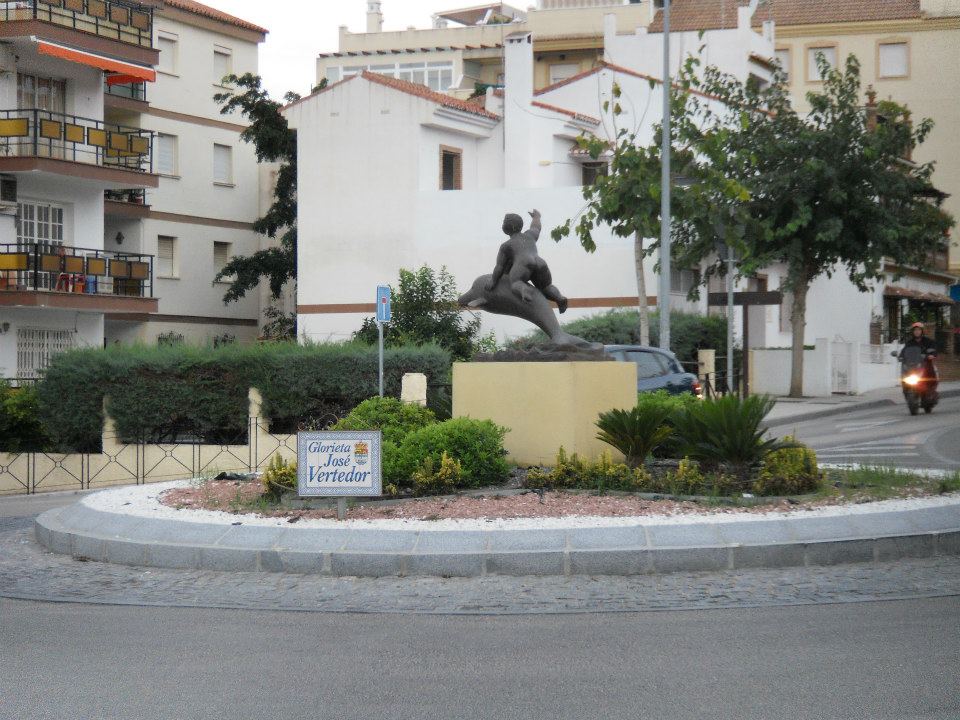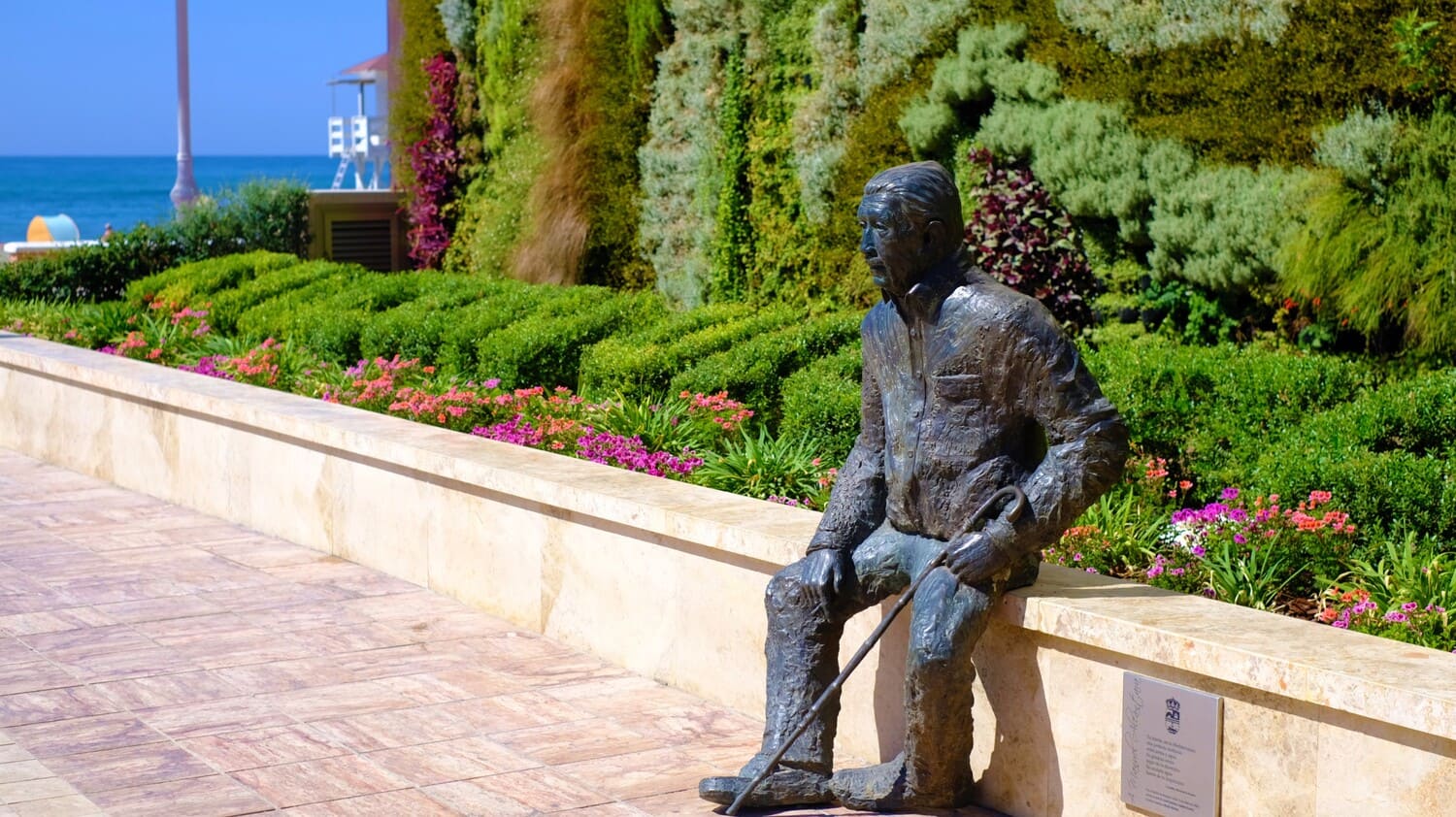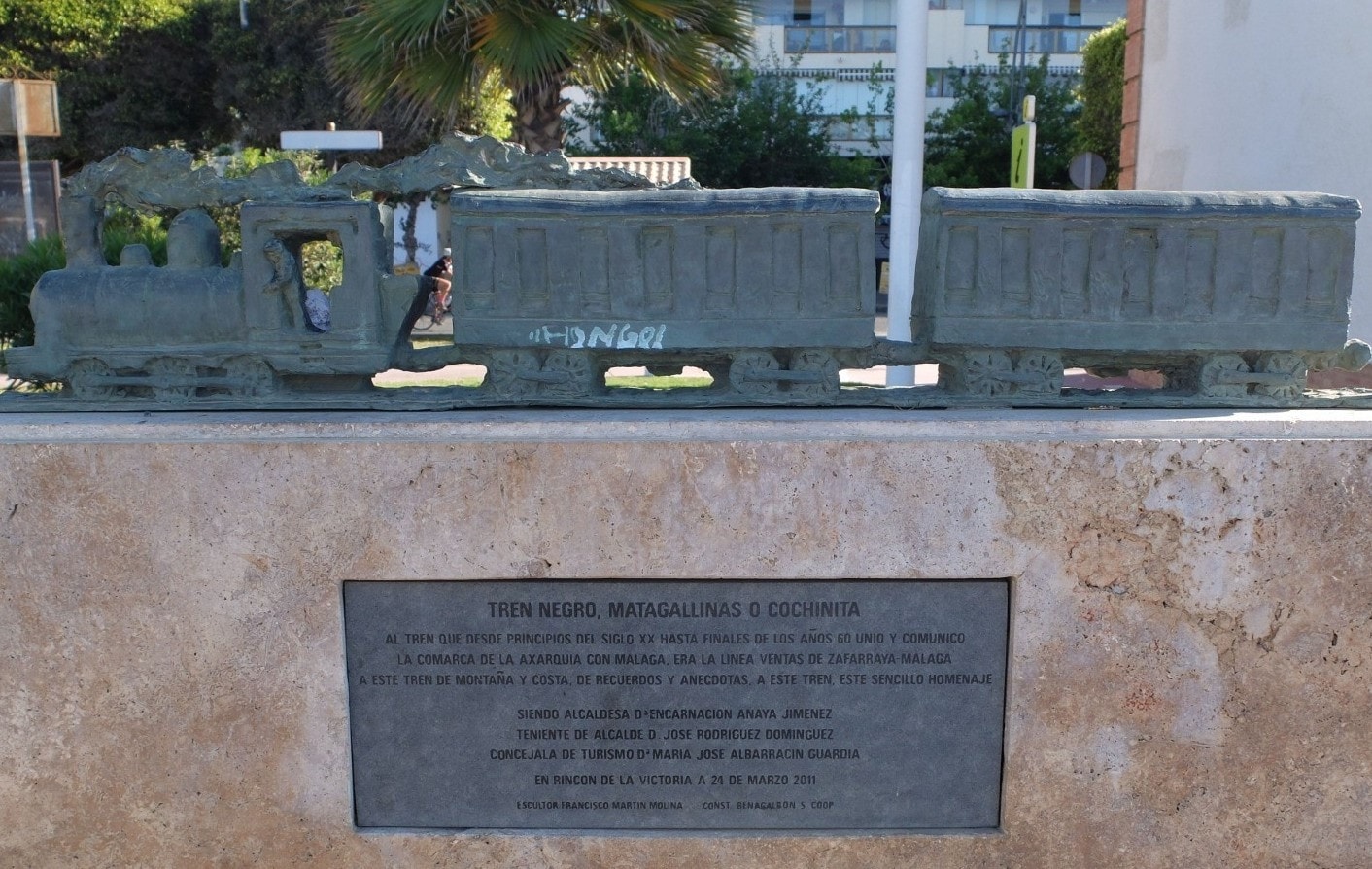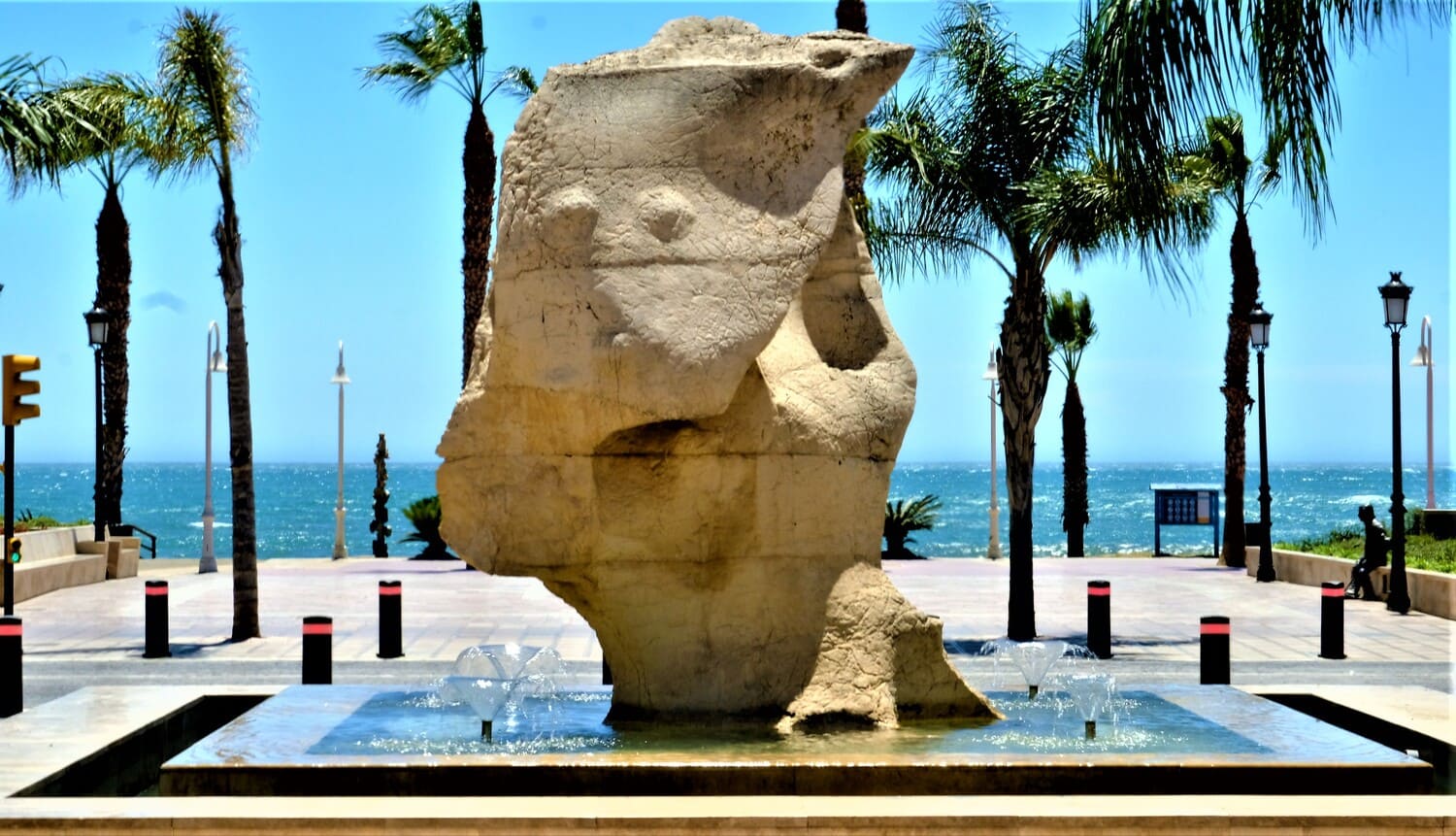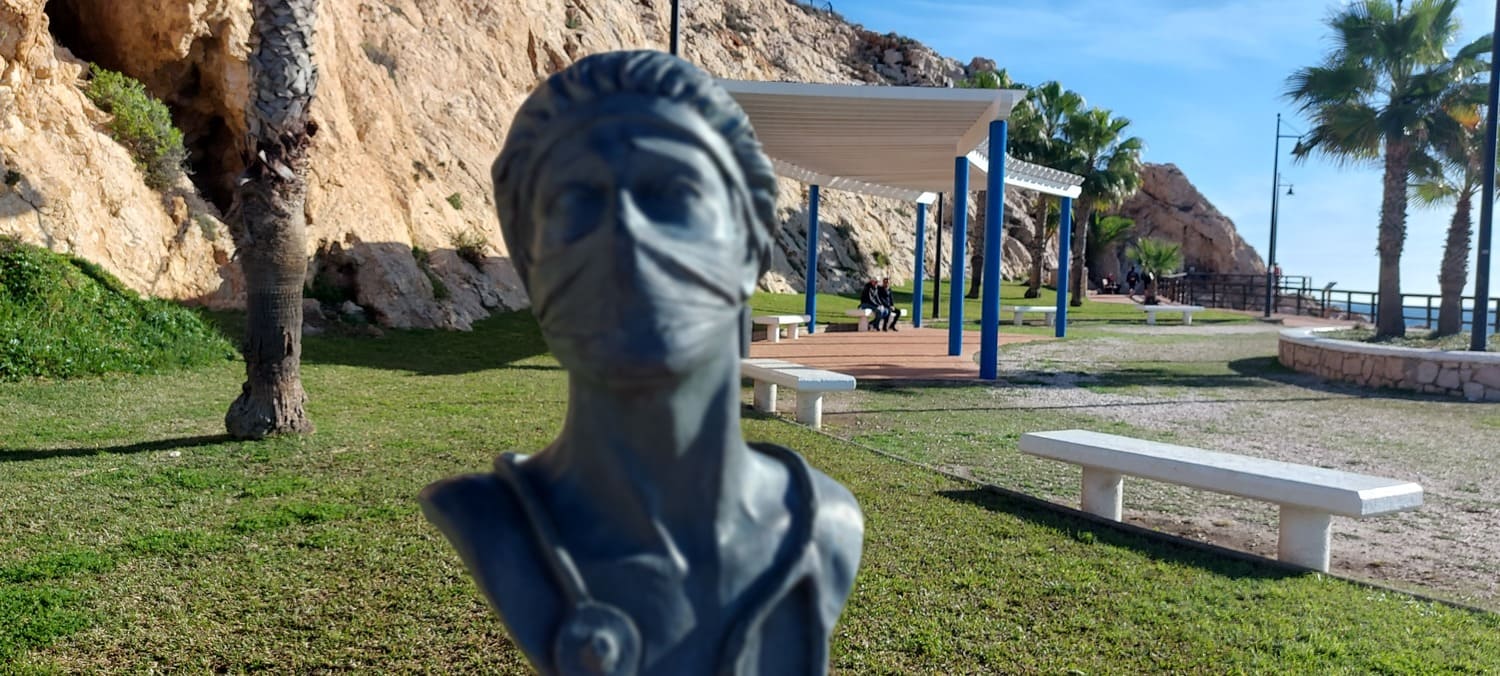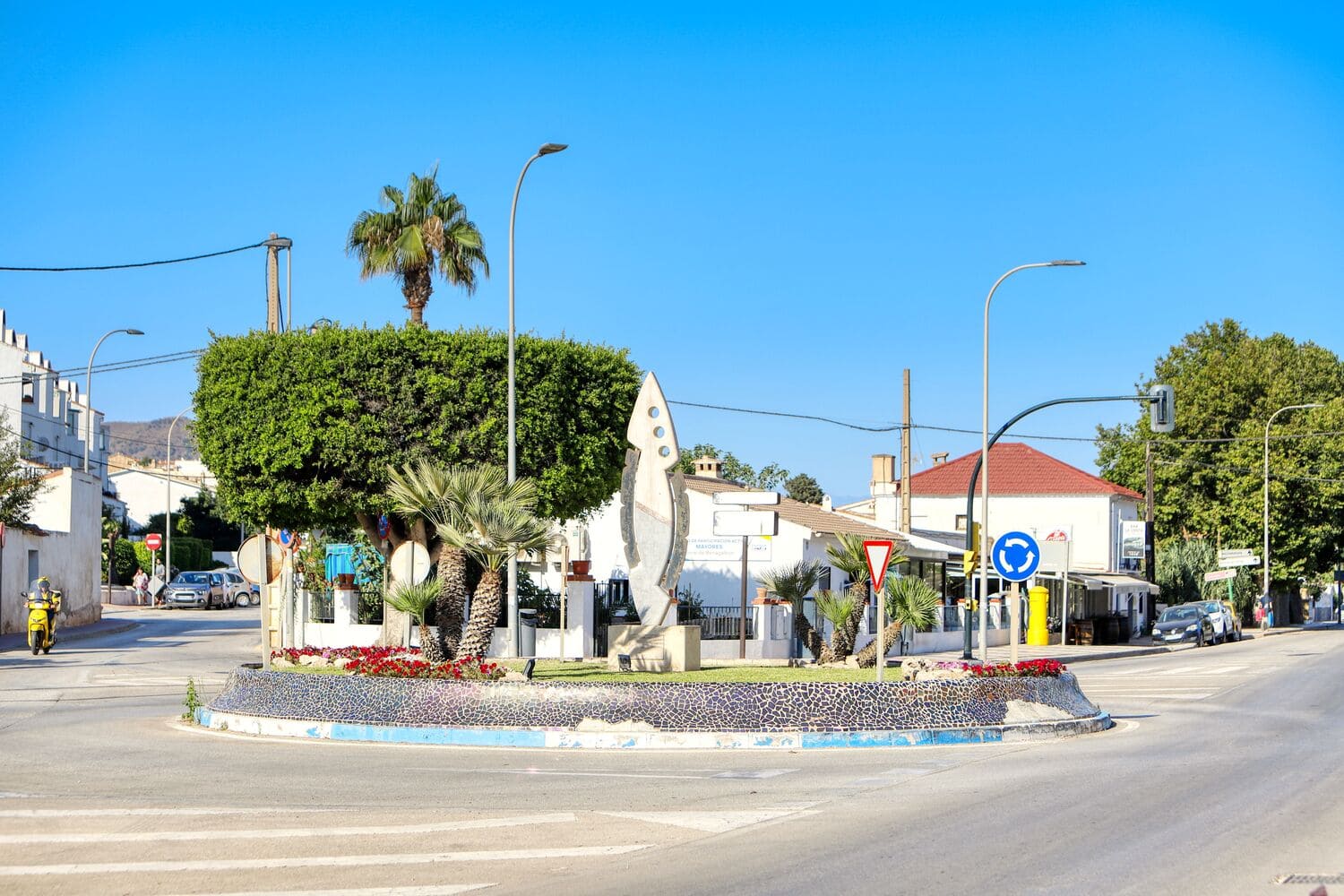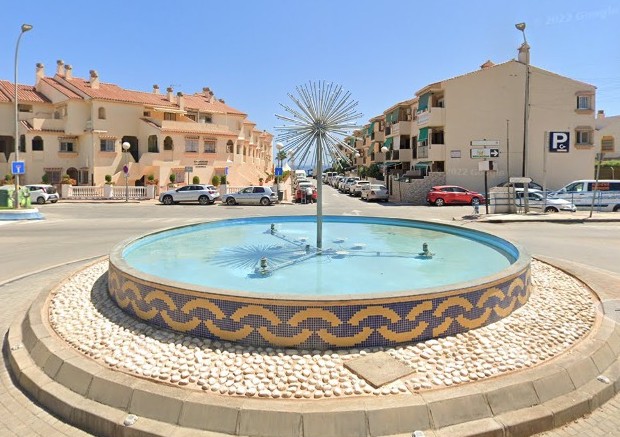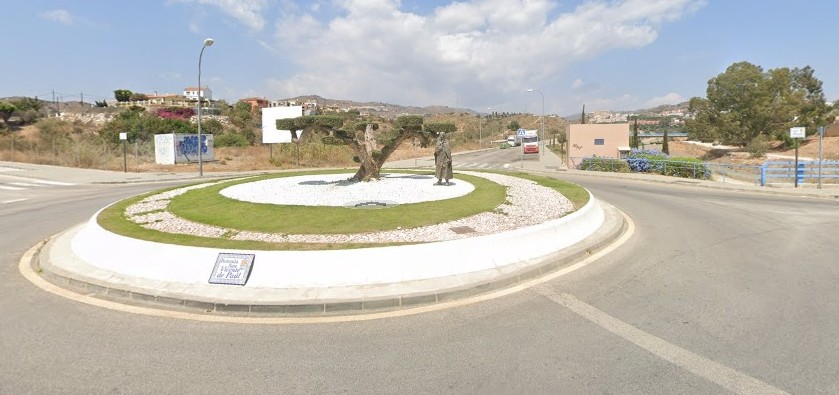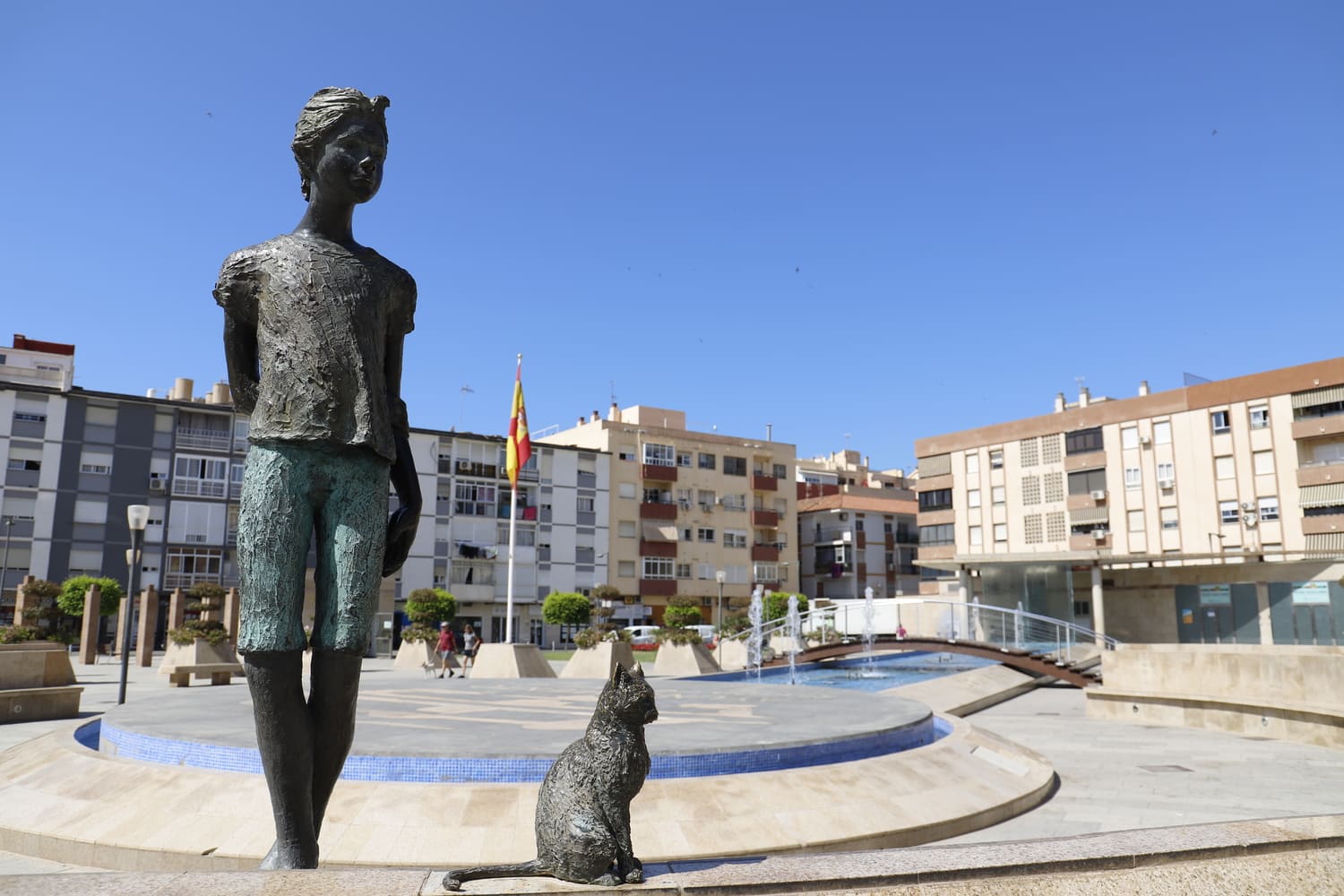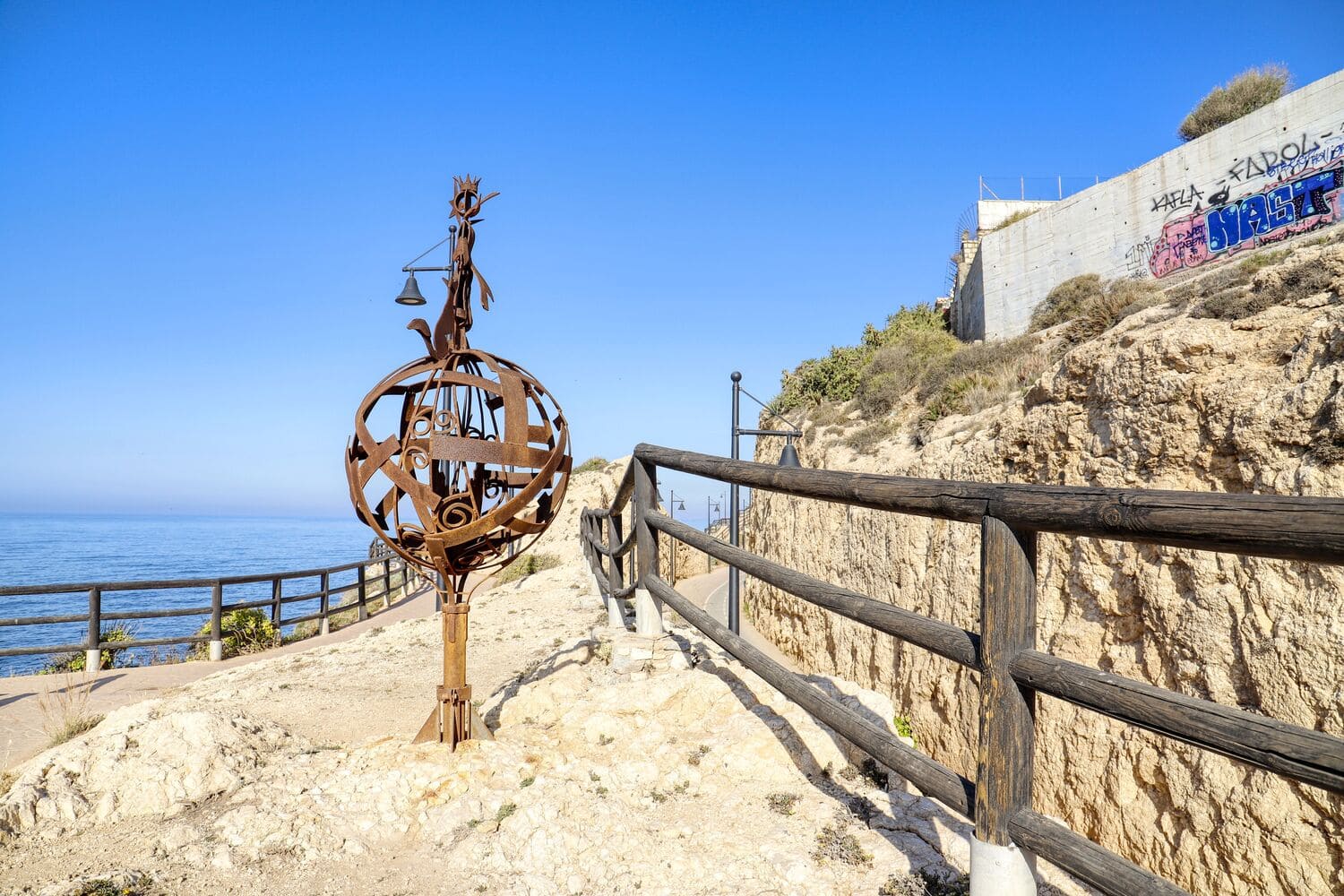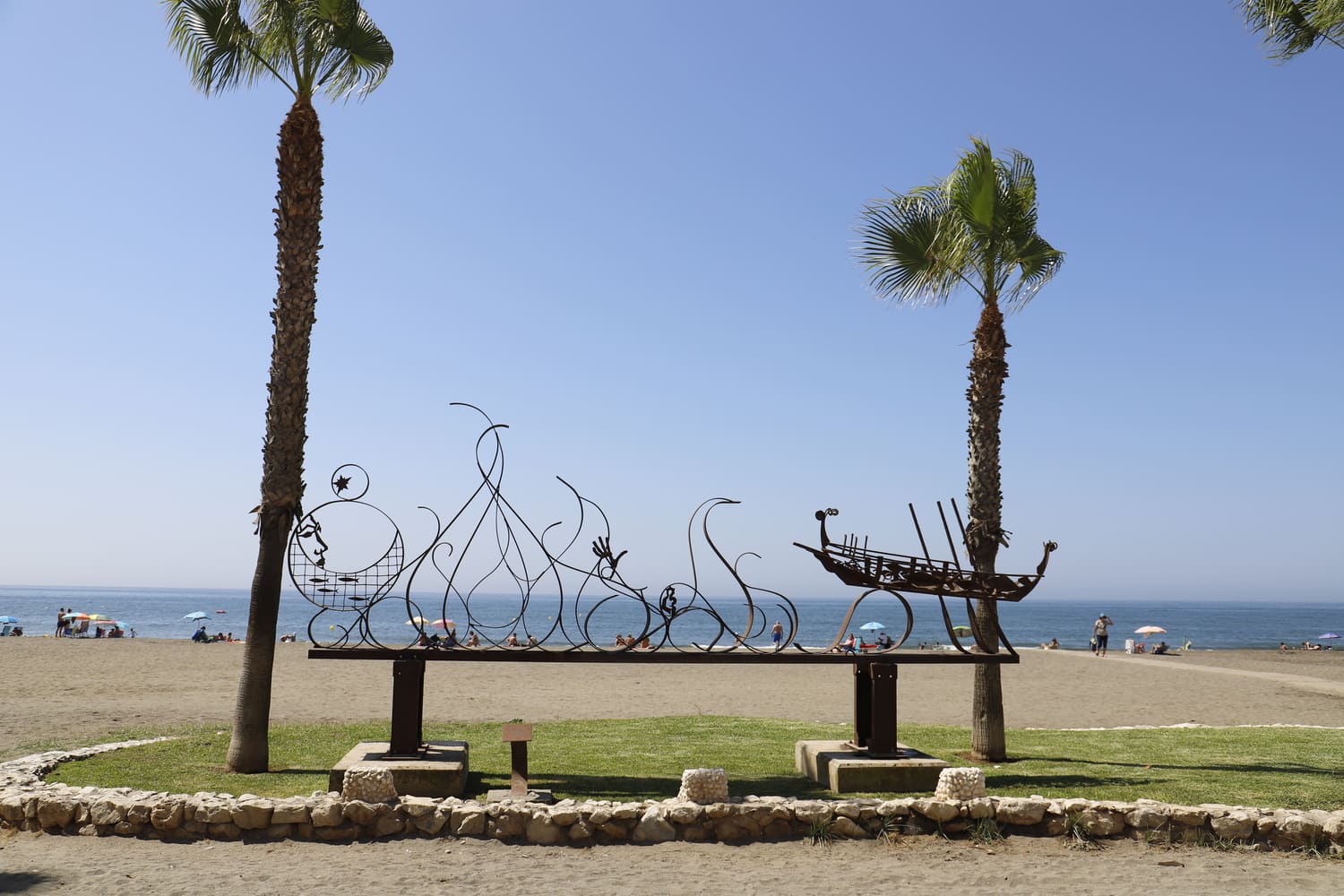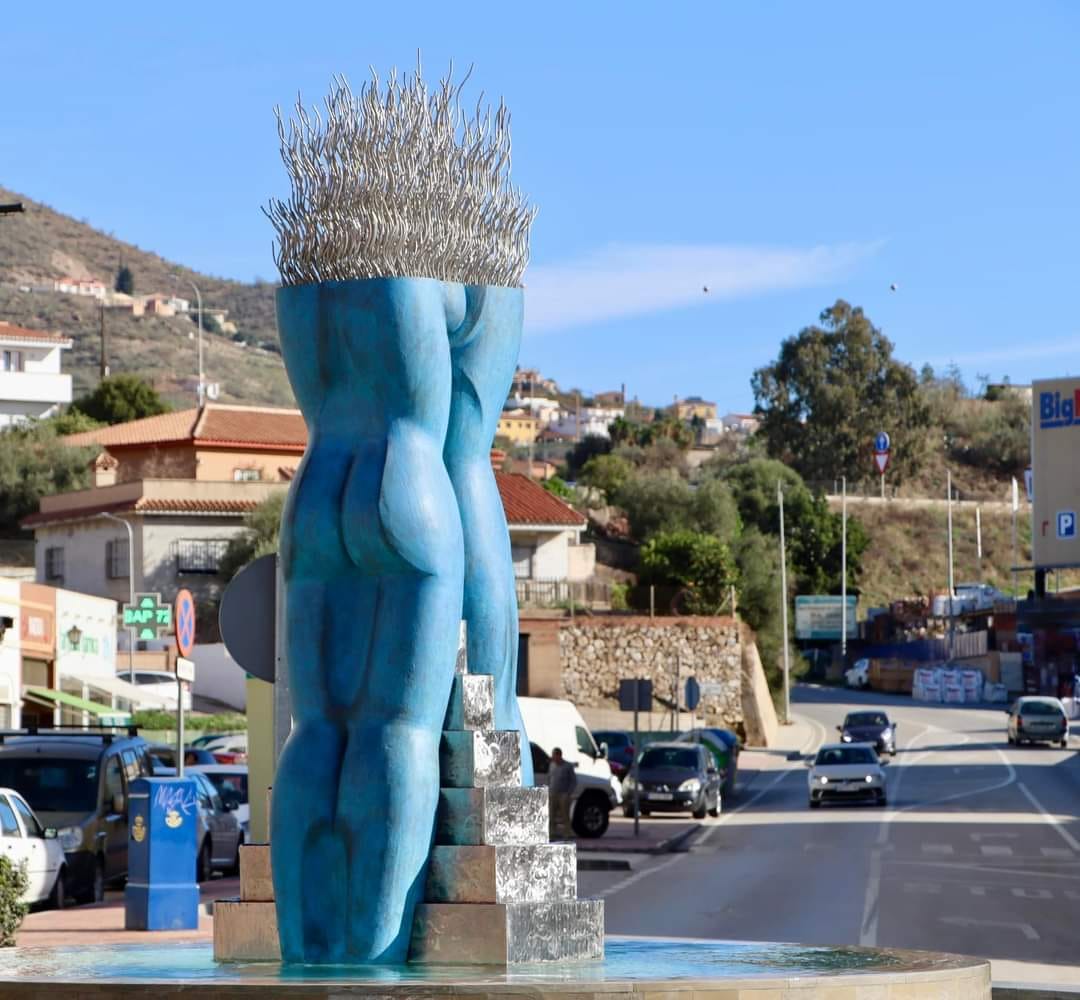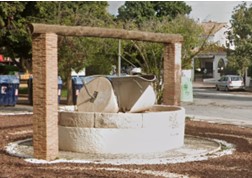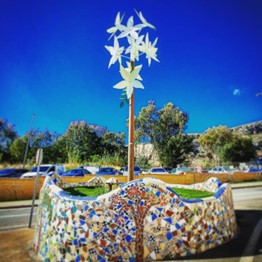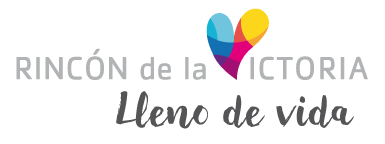ROUTE OF THE SCULPTURES
Name: Phoenician Goddess Malach (Noctiluca)
Author: Jaime Fernández Pimentel
Ubicación: Paseo Marítimo Virgen del Carmen Rincón de la Victoria
Biography: In the 8th century B.C. the Phoenicians were sailing all over the Mediterranean. They founded settlements next to natural harbours on the Malaga coast. They worshipped the goddess Malac with offerings and sacrifices even during the dry season.
Location: Paseo Marítimo Rincón de la Victoria
Name: Rapture of Europe
Author: Jose Seguiri
Location: In the gardens of the Casa Fuerte Bezmiliana, Rincón de la Victoria.
Biography:Bronze sculpture, 3.25 metres high without the concrete base and weighing some 2,600 kilograms.
One day Zeus sees Europa playing on the beach of Sidon. Inflamed with love for her beauty, he transforms himself into a white bull and sits at the maiden’s feet. The latter, after overcoming her initial shock at the animal’s gentleness, caresses it and ends up riding on its back, a moment which the false bull takes advantage of to throw himself into the sea and speed off to Crete. There he joins the young woman by a fountain, under a plane tree, which in memory of these loves has the privilege of never losing its leaves.
Name: Bronze sculpture by Manuel Alcántara
Author: Francisco Martín
Location: Located between the Town Hall and the promenade of Rincón de la Victoria in the José Domínguez Galdón “Pepe el Boticario” square.
Biography: He appears seated on a bench, with a cigarette in his hand and his walking stick. Next to him is a bronze piece from the book of poems ‘This summer in Malaga’ and a plaque that reads: ‘Your corner, in your Mediterranean, a perfect symbiosis between sand and water.
Name: Tren Negro Matagallinas o Cochinita
Location: Situated on the Paseo Marítimo Virgen del Carmen in Rincón de la Victoria at Avenida del Mediterráneo nº 140 (Old Railway Station which is now the Tourist Office).
Biography: Monument in homage to the train from Malaga to Ventas de Zafarraya known as the Cochinita, La Cochinita, Matagallinas or Tren Negro.
Name: Rotonda del Boquerón
Author: Juan de Dios Díaz
Location: In the centre of the roundabout on Avenida de la Torre in the town of Torre de Benagalbón, at the height of the Guardia Civil Barracks.
Biography: A three and a half metre high marble and steel sculpture that pays homage to the culinary flagship of the coast, the Victorian anchovy.
Name: Fountain of Life
Author: Suso de Marcos
Location: Located on the main access roundabout to the town, Benagalbón road.
Biography: Tribute from the municipality of Rincón de la Victoria to all those who died as a result of Covid-19.
